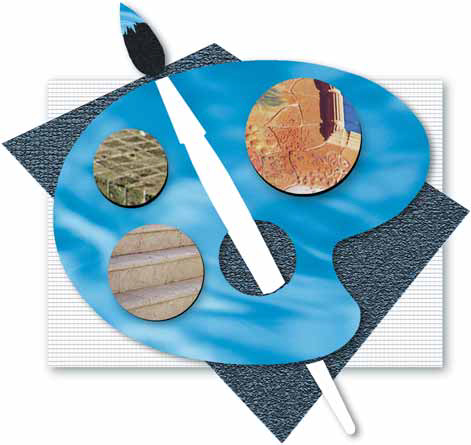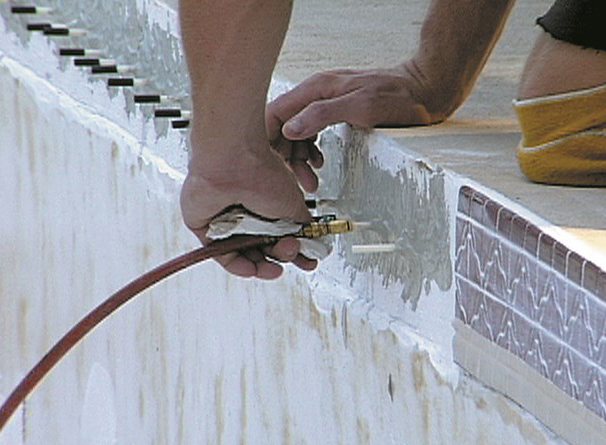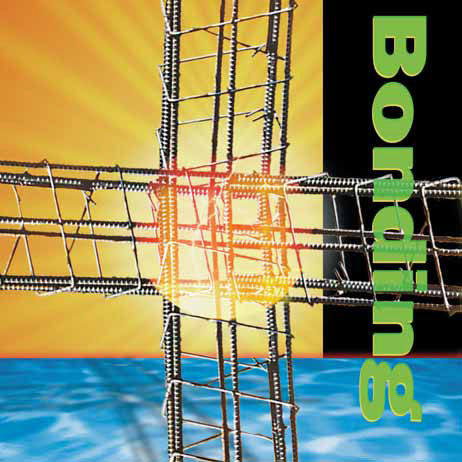Professional Watershaping
There's much to be said about this brave, new world of watershaping we're in right now - and one of the things that's most abundantly clear is that clients expect more these days: What was "good enough" before just won't cut it, and to my way of thinking, that's a very good thing! One of the areas that most reflects this increase in expectations is the selection of the materials we use. More and more people I talk to around the country are now using things they wouldn't even have considered just five years ago - things that can add tremendous
I've been paying attention to what goes on in this industry for a long time, and I'd have to say that these times are better than any I've ever witnessed. And it's not just me: I talk all the time with people all over the country, and it's probably not going out on much of a limb to say that most of us are having the best times we've ever had. Everywhere you look, people are pressing as hard as they can to keep up with the demands being placed on them. And it's true even in
Despite everyone's best intentions, concrete structures sometimes crack. If those cracks occur in the shell of a pool, spa or other watershape and are big enough, they'll eventually leak - which often leads to development of even bigger cracks and far larger headaches for everyone involved. In many cases, nobody is to blame. You might have worked under the guidance of a geologist or engineer and used good construction practices in building a structure meant to withstand the tests of soils that expand, contract, shift, settle and occasionally quake, but structural cracks are a fact of life. You can
Last month we covered the "hows" of grounding pretty well. Using the definitions from the National Electrical Code (NEC) for guidance, we saw that in order to be considered effectively grounded, the non-current-carrying metal parts of all equipment associated with a watershape must be connected to the system grounding bus at the electrical service panel. This is accomplished by installing a green-colored (or green with a yellow stripe), minimum No. 12 AWG insulated copper conductor between the equipment's grounding terminal and the system grounding bus. This conductor is
Throughout my entire working life, I've never moved too far away from the water. From my early days as a pool manager (beach bum) at a resort hotel in Miami Beach through many years in pool service and still today, I've always worked and played in and around water. Whatever it is about bodies of water that infects people's spirits and pushes their internal fun buttons, I have it bad: I love to sail, fish and snorkel, I like living near bodies of water and I just love to look at water. On top of all that, I'm a Pisces. If there's one thing I find that I tend to have in common with my customers, it's this passion for things aquatic and the pleasures that come along with them. This is powerful stuff, and I've come to believe that our innate fascination rises to an even higher level of drama and interest when
Through the years, the #1 question asked of me at seminars and trade shows has been: "What's the difference between bonding and grounding?" I have wanted to do an answering article far some time, but I was concerned that its length would require it to be split into two pieces and that the every-other-month format of WaterShapes might make it difficult to maintain continuity of thought over a two-month span. I was pleased when our editor informed me that we would be going monthly for a while. I figured I'd strike now, while the fingers are nimble and the magazine issues more
Long before the Bobcats show up, most watershape designers will have used some sort of two-dimensional artwork to excavate their customers' imaginations. Perhaps it starts with old photographs in a portfolio, but it almost always ends up with new drawings that encourage precise, detailed communication between designer and client in a way that can never be fully achieved with verbal descriptions or written proposals. If done with appropriate detail and skill, a drawing gives designer and client the opportunity to explore the
Not long ago, my friend and Genesis 3 co-founder David Tisherman was in Miami. We took the opportunity to drive around and look at some of my jobs. As we moved through the Coral Gables area, really enjoying that beautiful waterfront community, he said, "This is nice. I'd really love to work around here." Now, in case you don't know, Mr. Tisherman is one of the finest pool designers and builders anywhere. My first reaction to his remark was, "Jeez, what would
Construction can be a tough business: Even minor conflicts or disputes often lead to courtroom battles, and you can hardly blame people in the trades for thinking 'potential lawsuit' every time they sign a contract. One way to avoid these lose/lose scenarios, says aquatic consultant Curt Straub, is to implement a simple, up-front agreement designed to foster cooperation among designers, engineers, contractors and clients.
One of the most critical moments in the life of any watershaper occurs when he or she meets prospective clients face to face for the first time. This is when jobs are won or lost - and, more significant, the point at which watershaper and clients begin what can become a long and fruitful relationship. I'll state right up front that I do not approach my initial customer meetings with the idea of walking out with a signed contract and a check. Instead, I go in trying to do what I can to help clients realize their dream of becoming owners of a quality watershape. Whether I end up






















